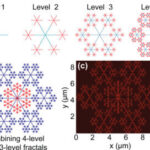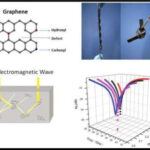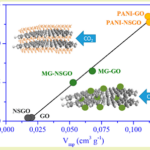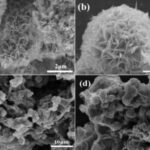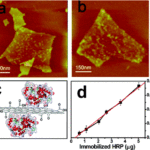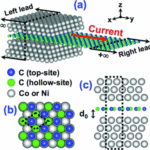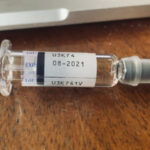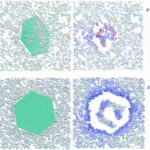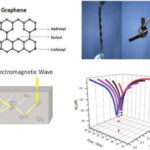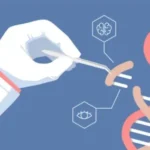December 16, 2024 5g, Graphene, Scientific alternative studies
All fertilizers used in agriculture should be tested for the presence of graphene oxide and the use of such products should be banned as they could contaminate crops.
Graphene Oxide in Intensive Agriculture
Reference study
Zhang, M.; Gao, B.; Chen, J.; Li, Y.; Creamer, AE; Chen, H. (2014). Slow-release fertilizer encapsulated by graphene oxide films. Chemical Engineering Journal, 255, pp. 107-113. https://doi.org/10.1016/j.cej.2014.06.023
Research has shown that potassium nitrate KNO3 encapsulated in GO graphene oxide films provides a slow release that is ideal for crop growth and production.
KNO3 binds to the GO graphene oxide films, forming fertilizer granules that dissolve in water after 8 hours.
The authors of the study state, “We believe that this new coating technology could be very promising for the development of environmentally friendly, slow-release fertilizers for agricultural production“.
However, GO graphene oxide is responsible for causing very harmful and toxic effects on the human body, such as neurodegenerative diseases, cell destruction, thrombosis and cytokine storm, to name a few of them already described in this blog.
The logic behind their research is also very interesting : they claim that “to ensure crop productivity, fertilizers must be applied to soils to provide plants with essential nutrients.
Conservative estimates suggest that 30 to 50 percent of crops are due to natural or synthetic commercial fertilizers.
As modern agriculture becomes increasingly dependent on non-renewable fertilizer resources, the minerals associated with them are likely to be of lower quality at higher prices in the future.
Some of the nutrients in these non-renewable fertilizers are not absorbed by plants and end up in groundwater or surface water, causing eutrophication and endangering the ecosystem.
To improve fertilizer quality and protect the environment and ecosystem“.
On the other hand, the authors seem to strongly agree that graphene oxide poses no risk to humans, which is justified by the method of production, as they point out in the next paragraph : “Although there are also concerns about the possible environmental impact of large-scale production of graphene or graphene oxide (GO) by traditional oxidation and reduction methods, recent advances in technology allow them to be prepared by environmentally friendly methods that do not require toxic starting materials or oxidants/reducing agents.
For example, it has been shown that graphene oxides can be produced on a large scale by electrochemical exfoliation of pencil tips in aqueous electrolytes without the use of toxic chemicals“.
However, this does not solve the problem of non-toxicity to humans.
Regarding the uptake of cadmium in wheat and rice, studies by (Gao, M. ; Song, Z. 2019) and (He, Y. et al. 2019) show interest in reducing the levels of this pollutant, but the results were not as expected, as GO graphene oxide affected the root growth of wheat seedlings, increasing their phytotoxicity.
In fact, the authors (Gao, M.; Song, Z. 2019) write, “Roots are important uptake and metabolic organs in crop plants; their growth status and metabolic strength directly affect plant growth.
Our results showed that GO increased cadmium toxicity in wheat seedling roots and inhibited cell division, resulting in a decrease in total root length, total root surface area, average root diameter, and the number of root hairs.
In addition, cadmium induced a significant decrease in channel protein content and a marked increase in cytochrome in roots in the presence of GO compared to control treatment or treatments with Cd or GO alone“.
This statement is critical because it clearly shows that graphene oxide is transferred from the plant soil to the roots, leaves, and then to the fruits and commodities to be produced.
This shows that graphene oxide can contaminate soil, crops and food, more than enough reason to stop its use immediately.
On the other hand, the work by He, Y. et al. (2019) acknowledges the potential of graphene oxide for plant growth, but also highlights the problem of increased toxicity in soils previously contaminated with heavy metals, since graphene oxide GO is able to adsorb such metals, as shown by (Wang, X. et al. 2019) and (Pei, Y.; Lu, M.; Lu, X.; Du, X. 2015), and consequently the assimilation of absorbed nutrients by plants.
Returning to the study of (Zhang et al. 2014), the following quote is worth highlighting : “They developed a simple, effective and scalable method to chemically deposit Fe3O4 nanoparticles in GO.
This hybrid can be loaded with the anticancer drug DXR with high loading capacity“.
This citation is important for several reasons : first, it shows that the researchers have been inspired by techniques using Fe3O4 (magnetite) nanoparticles and graphene oxide to control the uptake of drugs and biocides, as demonstrated by (Yang, X., Zhang, X., Ma, Y., Huang, Y., Wang, Y. and Chen, Y. 2009).
On the other hand, they took as reference the study of (Zu, SZ ; Han, BH 2009) for the formation of supermolecular graphene hydrogel nanosheets and copolymers based on the work of (Yang, X.; Wang, Y.. ; Huang, X.; Ma, Y.; Huang, Y.; Yang, R.; Chen, Y. 2011) | (Liu, Z.; Robinson, JT; Sun, X.; Dai, H. 2008), which directly relates to the use of graphene oxide in aqueous solution for cancer treatment.
Fe3O4 (magnetite) nanoparticles combined with GO graphene oxide have microwave electromagnetic properties that operate at frequencies compatible with 5G technology, as cited, for example, by (Ma et al. 2013).
In addition, Fe3O4/GO nanoparticles are used in the delivery of so-called DNA “vaccines” for experimental cancer treatments (Shah, MAA; He, N.; Li, Z.; Ali, Z.; Zhang, L.. 2014), due to their nanoscale nature and ability to deliver antigens and genetic reformulations using CRISPR techniques, as demonstrated by (Abbott, TR; Dhamdhere, G.; Liu, Y. ; Lin, X.; Goudy, L.; Zeng, L.; Qi, LS 2020; Ding, R.; Long, J.; Yuan, M.; Jin, Y.; Yang, H.; Chen, M.; Duan, G. 2021; Teng, M.; Yao, Y.; Nair, V.; Luo, J. 2021).
This allows us to clearly conclude that GO graphene oxide combined with Fe3O4 has long been tested in agriculture and in so-called “vaccines” against cancer through genetic modification of DNA, as it is well known for its electromagnetic properties.
Fertilizer granules coated with graphene oxide (KNO3/GO) have a special manufacturing process.
First, a solution of graphene oxide nanosheets is prepared (Figure 1a, top left), which, after drying, is combined with KNO3 granules in an oven at 90°C for 6 hours.
This causes GO nanosheets to cover the granules, forming a kind of pellet (Figure 1a, top right).
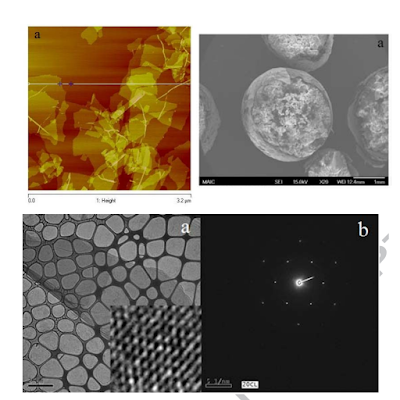
Final thoughts
Graphene oxide can be used in agricultural fertilizers because it has the ability to release fertilizer compounds gradually.
If this were the case, it would result in the disruption of soil, crops and the entire food chain.
Therefore, all fertilizers used in agriculture should be analyzed for the presence of graphene oxide and the use of such products should be banned as they could contaminate crops.
If it is confirmed that the fields are contaminated with graphene oxide fertilizers and pesticides, it would mean that a significant portion of the land could not be used for cultivation for a period of time (as yet undetermined and unknown) until the toxic effect of graphene oxide is mitigated.
This could also mean that graphene oxide is found in groundwater and therefore water wells used for irrigation and consumption could also be contaminated.
There is evidence that graphene oxide has been widely used in research in all possible applications and uses (agriculture, medicine, electronics, engineering, etc.), focusing attention and efforts on obtaining the possible benefits without considering the biosafety and potential toxicity already known for several years.
Bibliography
1.Abbott, TR; Dhamdhere, G.; Liu, Y.; Lin, X.; Goudy, L.; Zeng, L.; Qi, LS (2020). Development of CRISPR as a prophylactic strategy to combat novel coronavirus and influenza. BioRxiv. https://doi.org/10.1101/2020.03.13.991307
2.He Y.; Qian, L.; Zhou, K.; Hu, R.; Huang, M.; Wang, M.; Zhu, H. (2019). Graphene Oxide Promoted Cadmium Uptake by Rice in Soil. ACS sustainable chemistry & engineering, 7 (12), pp. 10283-10292. https://doi.org/10.1021/acssuschemeng.8b06823
3.Ding, R.; Long, J.; Yuan, M.; Jin, Y.; Yang, H.; Chen, M.; Duan, G. (2021). CRISPR/Cas system: a potential technology for the prevention and control of COVID-19 and emerging infectious diseases. Frontiers in cellular and infection microbiology, 11. https://dx.doi.org/10.3389%2Ffcimb.2021.639108
4.Gao, M.; Song, Z. (2019). Toxicity of cadmium to wheat seedling roots in the presence of graphene oxide. Chemosphere,, 233, pp. 9-16. https://doi.org/10.1016/j.chemosphere.2019.05.127
5.Gao, M.; Xu, Y.; Chang, X.; Dong, Y.; Song, Z. (2020). Effects of foliar application of graphene oxide on cadmium uptake by lettuce. Journal of Hazardous Materials, 398, 122859. https://doi.org/10.1016/j.jhazmat.2020.122859
6.Liu, Z.; Robinson, JT; Sun, X.; Dai, H. (2008). PEGylated nanographene oxide for delivery of water-insoluble cancer drugs. Journal of the American Chemical Society, 130 (33), pp. 10876-10877. https://doi.org/10.1021/ja803688x
7.Ma, E.; Li, J.; Zhao, N.; Liu, E.; He, C.; Shi, C. (2013). Preparation of reduced graphene oxide/Fe3O4 nanocomposite and its microwave electromagnetic properties. Materials Letters, 91, 91, pp. 209-212. https://doi.org/10.1016/j.matlet.2012.09.097
8.Shah, MAA; He, N; Li, Z.; Ali, Z.; Zhang, L. (2014). Nanoparticles for DNA Vaccine Delivery. Journal of Biomedical Nanotechnology, 10 (9), pp. 2332-2349. https://doi.org/10.1166/jbn.2014.1981
9.Teng, M.; Yao, Y.; Nair, V.; Luo, J. (2021). Latest Advances of Virology Research Using CRISPR/Cas9-Based Gene-Editing Technology and Its Application to Vaccine Development. Viruses, 13 (5), 779. https://doi.org/10.3390/v13050779
10.Wang, X.; Pei, Y.; Lu, M.; Lu, X.; Du, X. (2015). Highly efficient adsorption of heavy metals from wastewaters by graphene oxide-ordered mesoporous silica materials. Journal of Materials Science, 50 (5), pp. 2113-2121. https://doi.org/10.1007/s10853-014-8773-3
11.Yang, X.; Wang, Y.; Huang, X.; Ma, Y.; Huang, Y.; Yang, R.; Chen, Y. (2011). Multi-functionalized graphene oxide based anticancer drug-carrier with dual-targeting function and pH-sensitivity. Journal of materials chemistry,, 21 (10), pp. 3448-3454. https://doi.org/10.1039/C0JM02494E
12.Yang, X.; Zhang, X.; Ma, Y..; Huang, Y.; Wang, Y.; Chen, Y. (2009). Superparamagnetic graphene oxide–Fe 3 O 4 nanoparticles hybrid for controlled targeted drug carriers. Journal of materials chemistry, 19 (18), pp. 2710-2714. https://doi.org/10.1039/B821416F
13.Zu, SZ; Han, BH (2009). Aqueous dispersion of graphene sheets stabilized by pluronic copolymers: formation of supramolecular hydrogel. The Journal of Physical Chemistry C, 113 (31), pp. 13651-13657. https://doi.org/10.1021/jp9035887

